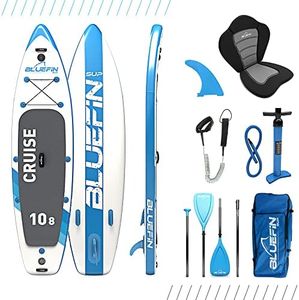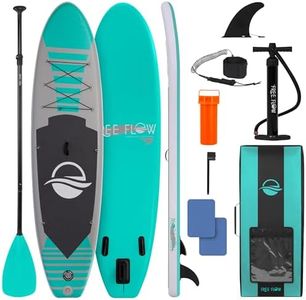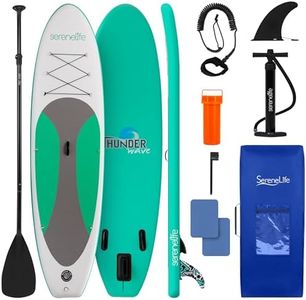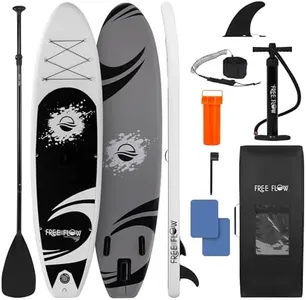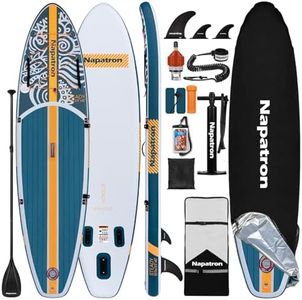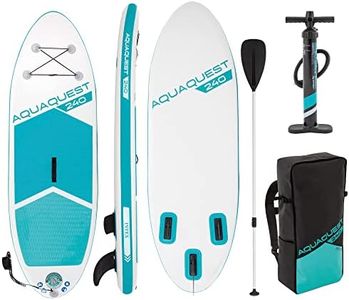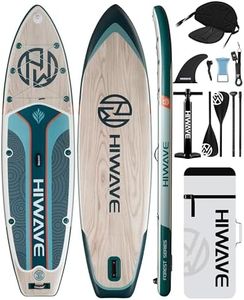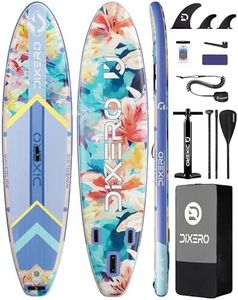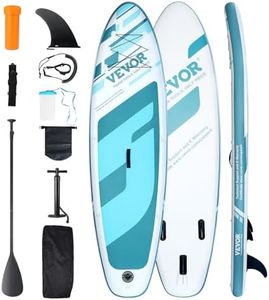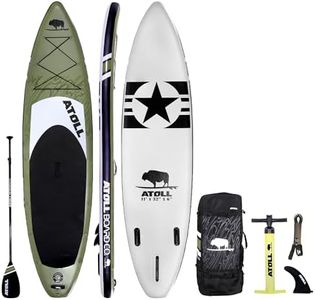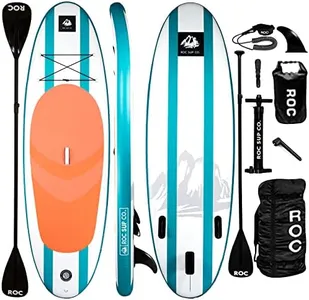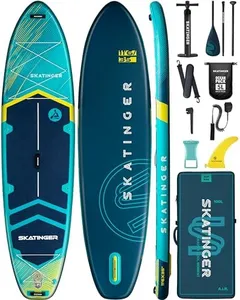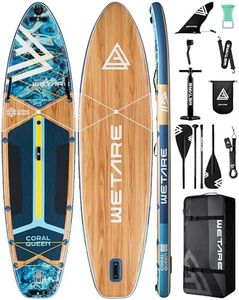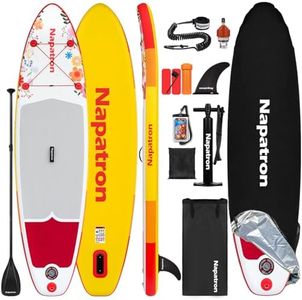We Use CookiesWe use cookies to enhance the security, performance,
functionality and for analytical and promotional activities. By continuing to browse this site you
are agreeing to our privacy policy
10 Best Paddle Boards
From leading brands and best sellers available on the web.By clicking on a link to a third party's website, log data is shared with that third party.
Buying Guide for the Best Paddle Boards
Choosing a paddle board is all about matching the right board to your intended use and physical ability. Paddle boards come in many shapes, sizes, and materials, which means there's something out there for everyone—whether you want to paddle on calm lakes, ride ocean waves, or go on long distance adventures. Focus on how and where you plan to use the board, your experience level, and what feels comfortable to carry, transport, and control on the water. Once you understand the key specs, it becomes much easier to pick a board that helps you have the most enjoyable paddling experience.Board TypeThe type of paddle board you choose determines how well it performs for certain activities. There are mainly three types: all-around boards, touring boards, and specialized boards like surf or racing models. All-around boards are good for beginners and general use, because they are stable and handle most water conditions. Touring boards are longer and designed for speed and distance on flat water, while surf-style boards are shorter and made for maneuvering on waves. Think about the kind of paddling you want to do most often, and pick the type that fits that activity best.
LengthLength affects both stability and speed. Shorter boards (under 10 feet) turn easily and are better for surfing or children. Medium-length boards (10-12 feet) are versatile and suit most adults for general recreational use. Longer boards (over 12 feet) move faster and track straighter, making them good for touring or racing. Pick a length that matches your main use: shorter for more playful or child use, mid-range for all-purpose, and longer for longer journeys or higher speeds.
WidthWidth determines how stable the board feels. Narrower boards (around 29-31 inches) are quicker but less stable, and are normally used by more experienced paddlers or for racing. Wider boards (32 inches and more) offer more stability, which is great for beginners, yoga, or carrying extra gear. If you are new to the sport or plan to do activities that require more balance, a wider board will be easier and more comfortable.
ThicknessThickness has a big impact on how much weight a board can support and how rigid it feels, especially for inflatable boards. Thicker boards (5-6 inches) hold more weight and stay stiffer, so they're better for heavier paddlers or carrying gear. Thinner boards (4 inches and below) sit lower in the water and are lighter, but have a lower weight capacity. If you are heavier or want to bring gear, go thicker. If you are light or prioritize agility and ease of carrying, a thinner board might be fine.
Material (Hard or Inflatable)Paddle boards are usually made of either solid materials like fiberglass or are inflatable using tough PVC. Hard boards generally offer better performance and feel, are faster, and track straighter, but they take up more storage space and are heavier to transport. Inflatable boards are easy to store and travel with, often nearly as stable as hard boards, and are more forgiving if you bump into things. Choose a solid board if you want maximum performance and have space; pick inflatable for convenience, portability, or if you don't have a lot of storage.
Weight CapacityWeight capacity tells you how much weight the board can handle without losing performance. Exceeding this can make paddling harder and more unstable. Check your own weight, plus anything else you plan to bring along, like pets or gear. Make sure the total is comfortably under the board’s stated capacity so it remains stable and easy to control.
Fin SystemFins help the paddle board go straight and maintain balance. Some boards have a single large fin, others use two or three smaller fins. Single fins are good for flat water and straight tracking. Multiple fins give better control and are more suitable for surfing or choppy water. Think about where you’ll paddle most: calmer water works well with one or two fins, while challenging surf or rivers may need more.
